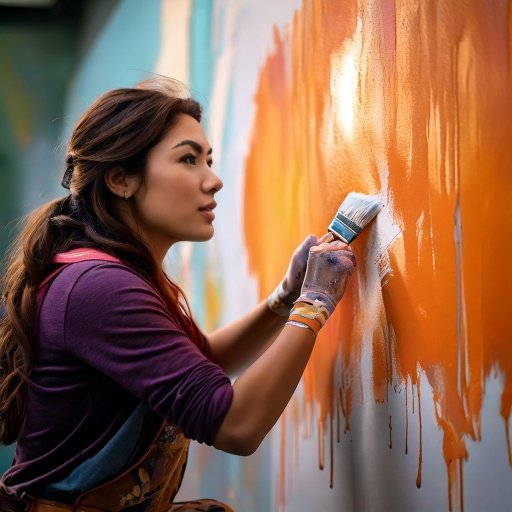How to Prep Like a Pro
Embarking on an interior painting project can transform your living space, but achieving a flawless finish requires more than just a brush and a can of paint. Many homeowners overlook the vital steps of interior painting preparation, leading to uneven coverage and peeling paint. In this guide, we’ll walk you through essential wall prepping techniques, from cleaning and patching to sanding and priming, ensuring your paint job is smooth and long-lasting. You’ll discover painting tips that professional painters use to achieve impeccable results, empowering you to tackle your next painting project with confidence. Ready to turn those drab walls into a vibrant masterpiece? Let’s dive in and prep like a pro!
Mastering Interior Painting Preparation
Proper preparation is the foundation of a successful interior painting project. This section will guide you through essential techniques to ensure your walls are primed for a flawless finish.
Essential Cleaning Techniques
Before you even think about picking up a paintbrush, it’s crucial to start with a clean slate. Dirty walls can compromise paint adhesion and result in an uneven finish.
Begin by dusting your walls with a soft brush or vacuum attachment to remove loose particles. Next, wash the walls with a mild detergent solution, paying extra attention to areas prone to grease or grime, such as kitchens and bathrooms.
For stubborn stains, use a specialized cleaner appropriate for your wall type. Remember to rinse thoroughly and allow the walls to dry completely before moving on to the next step.
Learn more about proper wall cleaning techniques from Sherwin-Williams.
Patching for a Flawless Finish
Addressing imperfections in your walls is crucial for achieving a smooth, professional-looking paint job. Start by carefully inspecting the surface for cracks, holes, or dents.
For small holes and cracks, use spackling compound and a putty knife to fill them in. For larger damages, you may need to use drywall compound or even replace sections of drywall.
Once the patching material is dry, sand the area smooth to blend it with the surrounding wall. This attention to detail will ensure that your final paint job looks seamless and professional.
Sanding Secrets from the Pros
Sanding is a critical step that many DIYers overlook, but it’s essential for achieving a smooth, even paint finish. Start with a medium-grit sandpaper to remove any remaining roughness or imperfections.
Pay special attention to patched areas, ensuring they’re completely flush with the surrounding wall. For glossy surfaces, use fine-grit sandpaper to create a slightly rough texture that will help the new paint adhere better.
After sanding, be sure to remove all dust with a tack cloth or vacuum to prevent it from interfering with paint adhesion. This step, while time-consuming, will significantly improve the quality of your final paint job.
Primer: The Key to Success
Priming is a crucial step that can make or break your painting project. This section will help you understand the importance of primer and how to use it effectively.
Choosing the Right Primer
Selecting the appropriate primer is essential for achieving optimal results in your painting project. Different surfaces and paint types require specific primers to ensure proper adhesion and coverage.
For new drywall, use a drywall primer-sealer to create a uniform surface. When covering dark colors or stains, opt for a stain-blocking primer. For glossy surfaces, choose a bonding primer to promote adhesion.
Consider the type of paint you’ll be using as well. Water-based primers work well with latex paints, while oil-based primers are better suited for oil-based paints. The Home Depot offers a comprehensive guide on choosing the right primer.
Application Tips for Best Results
Applying primer correctly is just as important as choosing the right one. Start by stirring the primer thoroughly to ensure even consistency.
-
Use a roller for large areas and a brush for corners and edges.
-
Apply the primer in thin, even coats to avoid drips and ensure proper drying.
-
Allow each coat to dry completely before applying the next one.
For best results, sand lightly between coats of primer to create an ultra-smooth surface for your paint. This extra step can make a significant difference in the final appearance of your painted walls.
Benefits of Hiring Professional Painters
While DIY painting can be rewarding, there are significant advantages to hiring professional painters. This section explores why investing in professional services can be a smart choice.
Ensuring a Long-Lasting Finish
Professional painters bring years of experience and expertise to your project, ensuring a durable and high-quality finish that stands the test of time.
They have access to premium materials and tools that may not be readily available to the average homeowner. This, combined with their knowledge of proper application techniques, results in a paint job that looks better and lasts longer.
Professionals also understand the importance of proper surface preparation and use advanced techniques to address issues that might compromise the longevity of the paint job. Behr provides insights into professional-grade preparation techniques.
Stress-Free Wall Prepping Techniques
One of the most significant advantages of hiring professionals is the stress relief it provides. Wall preparation can be time-consuming and physically demanding, especially for larger projects.
Professional painters have efficient systems in place to handle all aspects of wall prep, from cleaning and patching to sanding and priming. They can quickly identify and address potential issues that might escape an untrained eye.
Moreover, they handle all the messy and tedious work, allowing you to focus on other aspects of your home improvement project or simply enjoy your free time. Hilary’s Painting in Fort Worth offers expert tips on professional painting services.




